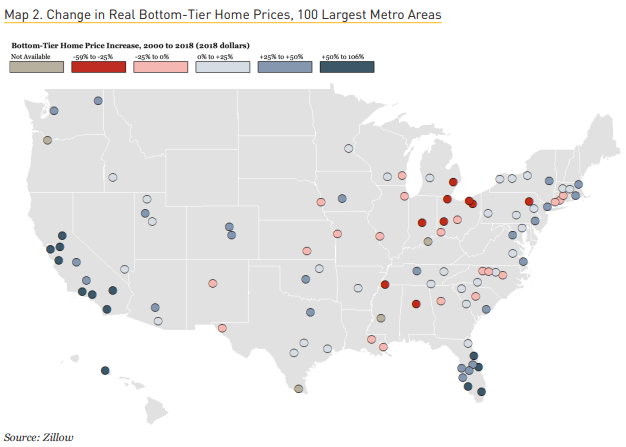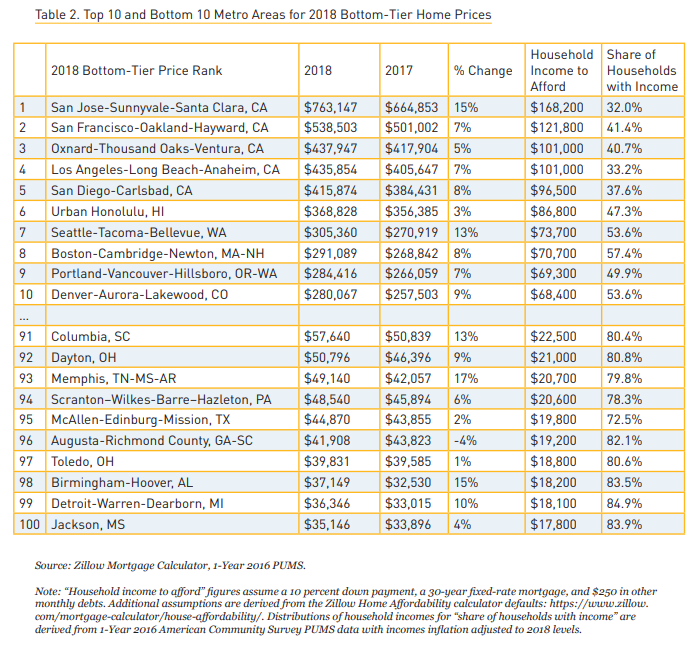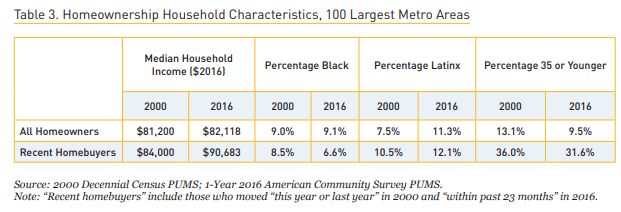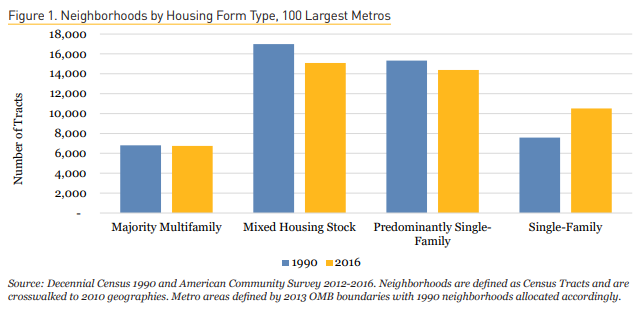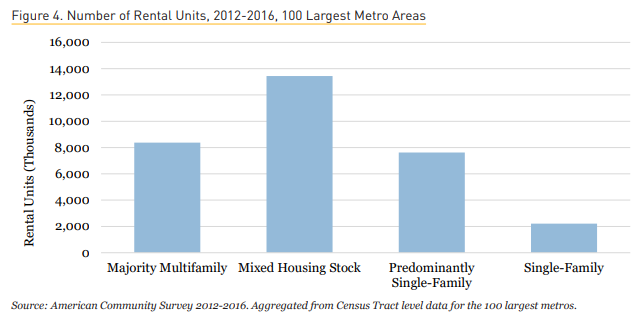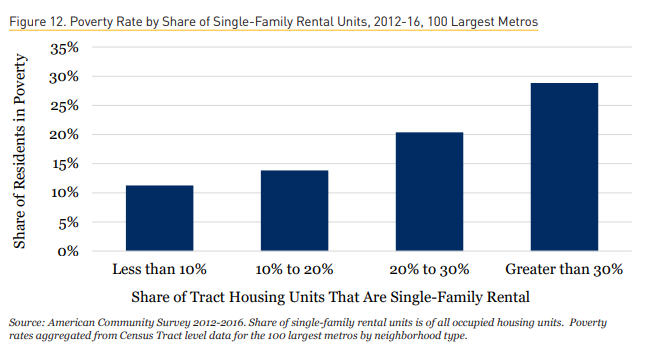A few key takeaways from our latest research on how trends in housing production have contributed to disparities in how many and what kinds of households can get into homeownership or access areas of opportunity through renting. http://bit.ly/supply-and-access">https://bit.ly/supply-an... https://twitter.com/TernerHousing/status/1197601238096891904">https://twitter.com/TernerHou...
We know housing production has failed to keep up with demand in many major metro areas. And what has been built for sale has been dominated by (more expensive) SF detached houses. Entry-level for-sale homes have dwindled and gotten more expensive in most major metros.
Some of the individual metro stats are really jaw-dropping. Like, the typical bottom-tier home prices in the LA, Oxnard, San Diego, San Jose, and San Francisco metros is now higher than the typical top-tier home price in 72 other major metro areas. http://bit.ly/supply-and-access">https://bit.ly/supply-an...
Who is managing to buy amid these trends? Recent homebuyers now are higher-income, older, and less likely to be Black than they were in 2000.
For recent homebuyers in metros like Austin, San Antonio, San Francisco, & LA, typical incomes were more than $20k higher in real terms compared to homebuyers in 2000. The % of homebuyers <35 dropped by more than 10 percentage pts in metros incl. Charlotte, Denver, & Stockton.
New construction that departed from the SF detached norm provided access to homeownership for a more diverse pool of homebuyers. We’re just not building enough of it. So what about households who can’t buy? Supply constrains their choices as well.
The dominance of single-family construction in the nation’s major metros spurred the number of Single-Family neighborhoods to jump by nearly 40% since 1990, at the expense of neighborhoods with more mixed housing stock. http://bit.ly/supply-and-access">https://bit.ly/supply-an...
Our analysis shows that SF neighborhoods score highest on indicators of opportunity, but because rental housing is still predominantly multifamily relatively few rental (and even fewer affordable) options exist in SF neighborhoods.
What about the growing number of SF rentals? Fewer than 1 in 4 are actually located in SF neighborhoods. And the more SF rentals concentrate in a neighborhood the more likely that neighborhood is to be high poverty.
And what about new construction LIHTC? Not surprisingly, new affordable units have disproportionately clustered in neighborhoods that allow denser multifamily development & have made limited inroads into SF neighborhoods.
But those that did increased access to low poverty neighborhoods, often through building more smaller-scale-than-average projects. What do these findings suggest about policy efforts to increase access to areas of opportunity for low-income renters?
As much as more affordable housing and more tenant-based subsidies are needed, unless those efforts take into account—& align with efforts to shift—the myriad policies that constrain how much, where, & the types of housing built, they will struggle to scale access to opportunity.
The papers tee up a range of supply-oriented strategies to address gaps in access to entry level homeownership and the neighborhood choice constraints facing low-inc renters, from how we finance and incentivize production to reg reform and curbing costs. http://bit.ly/supply-and-access">https://bit.ly/supply-an...

 Read on Twitter
Read on Twitter